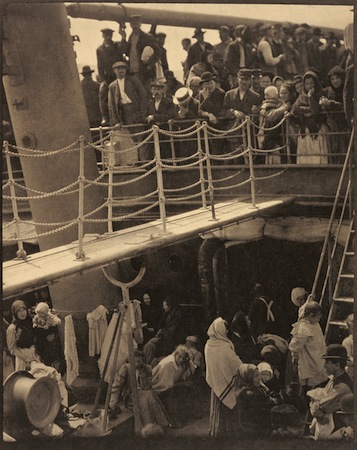Pictorialism and the City: Pictorialism in early 20th Century NYC
In 1888, Kodak released its first handheld amateur camera, increasing the accessibility of photography to the common man and making it easier to take and produce photos. This allowed for a lot more experimentation in photography, which led a group of avant-garde photographers to break off of the popular ways of photography and explore a new style known as Pictorialism. This style differs from the old style as it emphasizes the subject matter, tonality, and composition rather than a simple documentation of reality. Pictorialist used their vast imagination to turn their photography into something more of an art form, shifting photographers to start exploring the creative possibilities found in a camera.
The possibilities not only expanded for photography but also how one captured the city with a camera. Alfred Stieglitz, the father of Pictorialism, started his idea in 1902 when he broke off from the New York Camera Club with some of his colleagues to explore a new way of photography. They started a group they name the Photo-Secession and opened a gallery in Manhattan. Following these events, NYC became the hub for this new movement and several photographers moved to the city due to that fact. With a new vision in their minds, pictorialists re-imagined the city in a new and artistic manner and widened the possibilities for capturing urban environments.

Edward Steichen, The Flatiron
1904, printed 1909
Gum bichromate over platinum print
Alfred Stieglitz Collection, 1933
This photograph is one of several in which pictorialist photographers attempted to creatively capture the flatiron building. However, Stiechen is the most successful in this endeavour and this photograph has become closely connected with the Pictorialist movement. The photograph takes influence from Japanese woodcuts in it’s composition, and references the “Nocturne” paintings of Whistler in it’s coloristic effects. Using various other art forms, Stiechen’s piece offers a new and artistic perspective on the famous Flatiron Building and demonstrates the diverse ways to capturing architecture.

Alfred Steiglitz, From the Back Window – 291
1915
Platinum print
Alfred Stieglitz Collection, 1949
Overwhelmed by his many duties at the time, Stieglitz had little time to go out and photograph. So attempting to find a way to continue his work, he creatively captured the buildings out his nearby window. He uses the angles and edges of the building in pairing with the lights of the buildings to create interest for the viewer. This is the first of many photographs where Alfred Stieglitz artistically portrayed the vast architecture of New York from a window. As simple as this concept may be, Stieglitz masterfully composes the image and depicts architecture in a uniquely abstract way.

Karl Struss, [New York Street Scene]
Ca. 1912
Platinum print
Gilman Collection
This photograph was created by Karl Struss, a skilled pictorialist whose work was published by Alfred Stieglitz and who participated in many exhibitions. Not much detail is known about the background of this piece, but observing this piece closely shows a lot of compositional tools to help guide the viewer's eye toward the subject. Such as the car and man on either side of the image creating a frame or the line of the sidewalk pointing straight toward the subject. This experimentation displayed new ways to use the urban environment to craft compositions.

Alfred Stieglitz, The Steerage
1907, printed in or before 1903
Photogravure
Alfred Stieglitz Collection, 1933
The Steerage is considered to be one of Stieglitz’s greatest pieces as being both a formative document and one of the first works of modernism. It was even praised by Picasso for it’s unique composition for its use of shifting depths and collage-like figures. This image was taken by Stieglitz while on trip with his family from his hometown of New Jersy to Europe. It depicts the steerage of a ship, a part of the ship for passengers with the cheapest tickets. This photo takes advantage of the chaos and the ships structure to form a captivating image.

Alfred Stieglitz, The Hand of Man
1902, printed 1910
Photogravure
Alfred Stieglitz Collection, 1949
The Hand of Man was first published in January 1903 in the inaugural issue of Stieglitz’s very own newspaper, Camera Work. The photograph depicts a lone locomotive chugging through the train yards of Long Island City. In this photograph, Stieglitz wanted to portray the rough industrial environment as something that can have a calm, atmospheric beauty to it. Transforming how the viewer perceives industrialization. The title also can be read with a double meaning as it not only alludes to the modern transformation of the landscape, but also to the mechanical process of photography itself. Stieglitz believed that the camera could be transformed into a tool of art if used by the right photographer.

Alvin Langdon Coburn, Broadway at Night
Ca. 1910
Photogravure
The Elisha Whittelsey Collection
Coburn was mesmerized by the electrified lamps on the streets of broadway. He described how many evenings he would sit and wait for them to all light up and it was magical. This image depicts the street lamps on Broadway and is well composed in a way that the lights fade toward the distance revealing all the advertisement lighting in the background. This image was very personal to Coburn and demonstrates how photographers were turning toward introspection in order to capture more meaningful urban photographs.
No comments:
Post a Comment